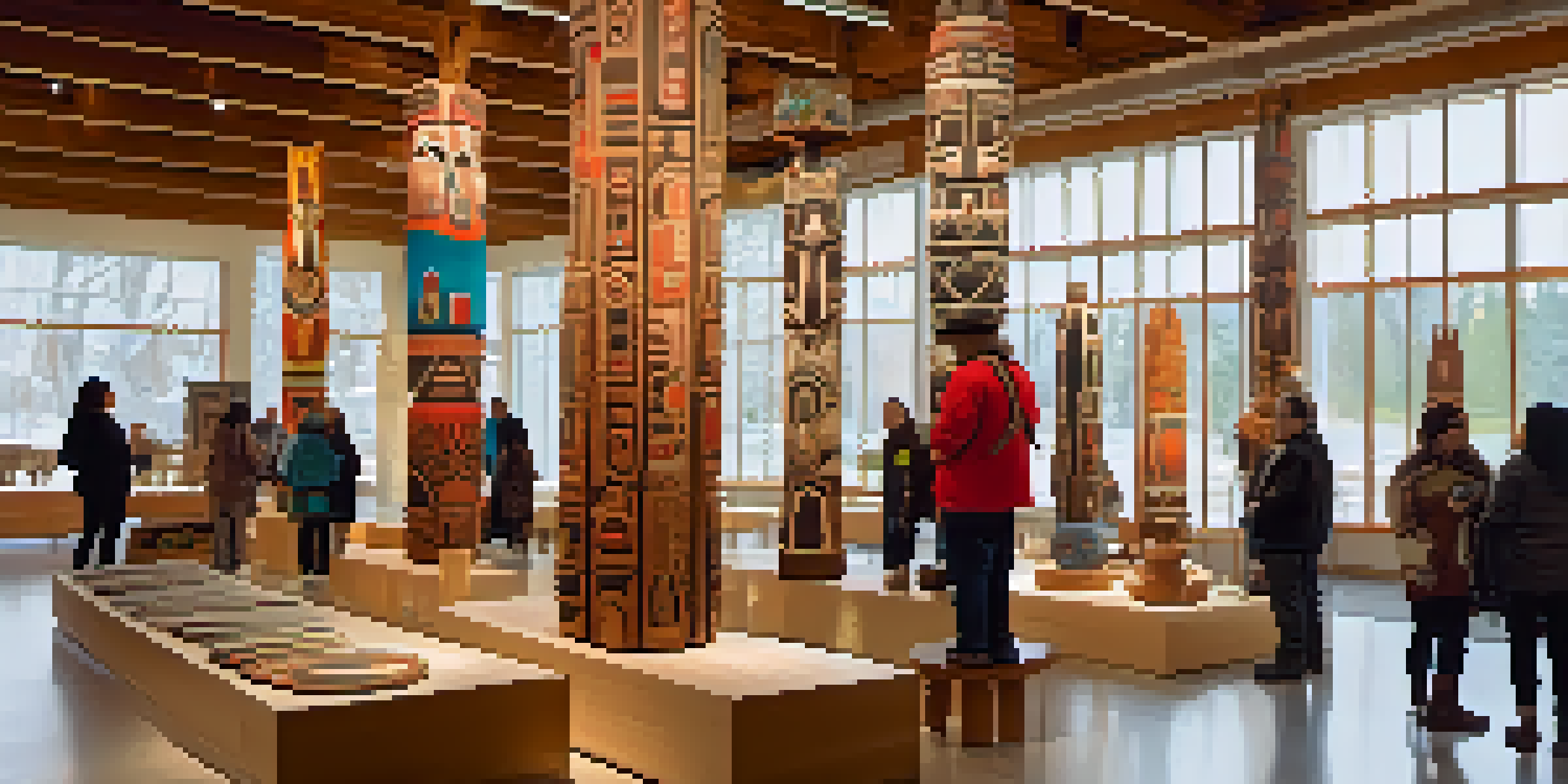How Museums Handle Cultural Appropriation in Exhibitions

Understanding Cultural Appropriation in Museums
Cultural appropriation occurs when elements of one culture are taken by another, often without permission or understanding. In the context of museums, it can lead to misrepresentation and exploitation of marginalized cultures. This is why museums must tread carefully, ensuring they honor the cultures they represent while avoiding appropriation.
The Role of Cultural Sensitivity in Exhibits
Cultural sensitivity involves recognizing and respecting the beliefs and practices of different cultures. Museums are increasingly prioritizing this sensitivity to ensure that exhibitions are not only informative but also respectful. By consulting with cultural representatives, they can create a narrative that is both accurate and mindful.
Cultural Sensitivity is Essential
Museums must prioritize cultural sensitivity by consulting with community representatives to ensure exhibitions are respectful and accurate.
Collaborating with Indigenous and Local Communities
Many museums have begun collaborating with Indigenous and local communities to create exhibitions that reflect their authentic voices. This partnership ensures that cultural artifacts are presented in a way that aligns with the community's values and perspectives. Such collaboration not only enriches the exhibition but also fosters trust and respect.
Implementing Ethical Guidelines for Exhibitions
To combat cultural appropriation, museums are developing ethical guidelines that dictate how cultural materials should be sourced and displayed. These guidelines often include principles of transparency, consent, and attribution. By following these ethical standards, museums can safeguard against potential appropriation and misrepresentation.
Collaboration with Local Communities
Engaging Indigenous and local communities in the creation of exhibitions helps present cultural artifacts authentically and fosters mutual respect.
Educating Staff and Visitors on Cultural Issues
Education plays a crucial role in addressing cultural appropriation. Museums are investing in training for their staff to better understand cultural issues and the implications of appropriation. Additionally, visitor education programs help raise awareness, making the public more conscious of the cultural narratives presented in exhibitions.
Showcasing Authentic Cultural Practices
Instead of merely displaying artifacts, museums are now emphasizing the importance of showcasing authentic cultural practices. This can include live demonstrations, workshops, or interactive experiences that engage visitors in a meaningful way. Such approaches not only celebrate cultural heritage but also provide a platform for underrepresented voices.
Education on Cultural Issues
Investing in education for staff and visitors is crucial in raising awareness about cultural appropriation and promoting respectful representation.
The Impact of Social Media on Cultural Representation
Social media has transformed how museums interact with their audiences and the cultures they represent. Museums now face greater scrutiny and feedback from the public, making it essential to be responsive to concerns about cultural appropriation. This heightened awareness encourages museums to be more proactive in their cultural representation efforts.
The Future of Museums and Cultural Appropriation
As society evolves, so too must the approach of museums regarding cultural appropriation. The future lies in ongoing dialogue, collaboration, and education to ensure that all cultures are represented fairly and respectfully. By embracing these changes, museums can become spaces of learning, understanding, and cultural appreciation for everyone.